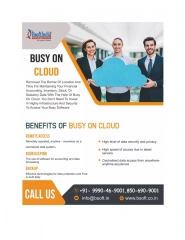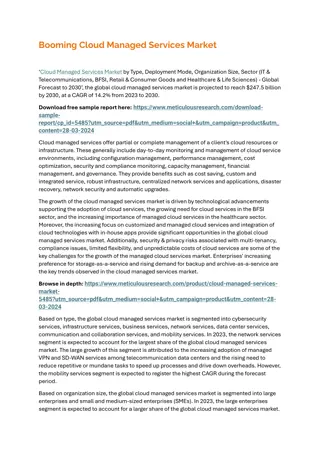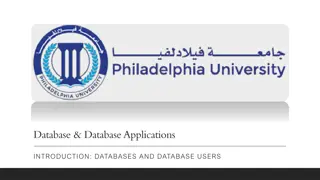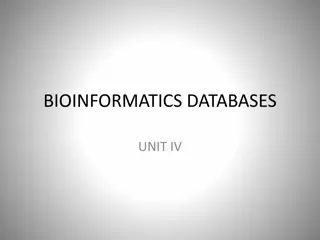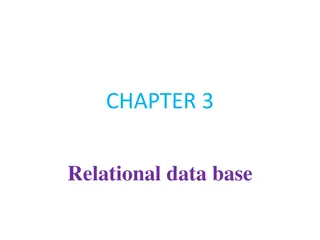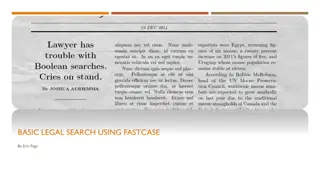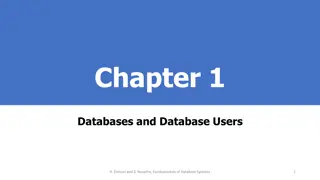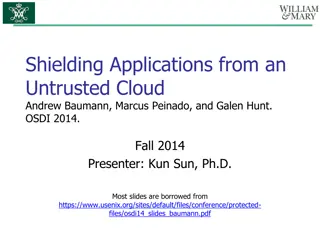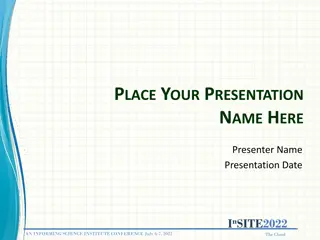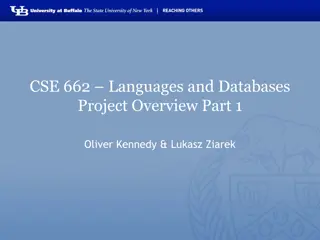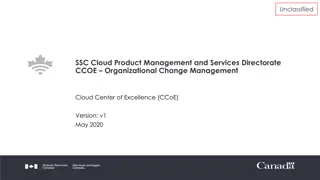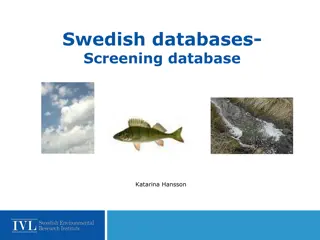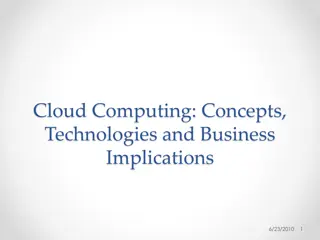Emerging Trends in Cloud Databases: Challenges and Opportunities
Cloud databases have revolutionized data management, offering scalability and efficiency. This article explores new techniques in cloud-native databases, challenges faced in cloud DBs, and the architecture of Cloud OLTP and OLAP systems. It delves into the significance of OLTP and OLAP in different domains like banking, shopping, and data analytics, highlighting the importance of adapting to serverless computing and reducing network traffic. The tutorial overview provides insights into Cloud OLTP and OLAP architectures, techniques, and existing challenges, presenting a comprehensive view of the evolving database landscape.
Download Presentation

Please find below an Image/Link to download the presentation.
The content on the website is provided AS IS for your information and personal use only. It may not be sold, licensed, or shared on other websites without obtaining consent from the author. Download presentation by click this link. If you encounter any issues during the download, it is possible that the publisher has removed the file from their server.
E N D
Presentation Transcript
EPL646: Advanced Topics in Databases Cloud Databases: New Techniques, Challenges, and Opportunities Cloud databases: new techniques, challenges, and opportunities. Guoliang Li, Haowen Dong, and Chao Zhang. 2022. Proc. VLDB Endow. 15, 12 (August 2022), 3758 3761. https://doi.org/10.14778/3554821.3554893 By Maria Alkiviadous: malkiv01@ucy.ac.cy 1
Introduction A cloud database is a database that is provided through vendors, such as Google or Amazon, and gives access to users to databases-as-a-platform (DBAAS). A prediction said that profit from the cloud databases by 2022, would reach 50% of the entire market earnings. 2
Cloud Native Databases The disaggregation design allows for separate expansion of storage resources, providing greater elasticity for clients. Cloud providers can improve multi-tenancy and reduce write addition by storing data in a single, disaggregated log repository. New techniques are being invented for performance improvement 3
Challenges in Cloud DBs 1. Effective processing of transactions via a redo log. 2. Reducing traffic in the network. 3. Adapting to serverless computing. 4
OLTP OLTP (Online Transaction Processing) is a type of database that is used to facilitate and manage transactions. It is used in banking, shopping and even sending text messages. OLTP systems have as a base the ACID (Atomicity, Consistency, Isolation, Durability) properties. 5
OLAP OLAP (Online analytical processing) is a software technology that allows you to analyse company data from several perspectives. Organisations acquire and retain data from several sources, including websites, apps, smart metres, and internal systems. 6
Tutorial Overview Cloud OLTP Architectures 8 12 Cloud OLTP Techniques 16 Cloud OLAP Architectures 18 Cloud OLAP Techniques 22 Challenges and Open Problems
Cloud OLTP Architectures 1. The Disaggregated Compute and Storage OLTP Architecture divides computing and storage nodes, improving performance and scalability. 8
Cloud OLTP Architectures 2. The Disaggregated Compute-Log-Storage OLTP Architecture divides compute, log service, and storage nodes, improving availability and durability by separating the log service from storage, unlike the previous one. 9
Cloud OLTP Architectures 3. The Disaggregated Compute-Buffer-Storage OLTP Architecture divides the system into compute nodes, storage nodes, and a buffer. It uses a shared remote buffer pool to manage data access 10
Cloud OLTP Techniques 1. Transaction Processing: This involves three approaches: i. Reads from a redo log. ii. Reads from both logs and page servers. iii. Reads from shared memory. 12
Cloud OLTP Techniques 2. Data Replication: This technique uses 3 approaches: i. Quorum-based log replication. ii. Log replication based on Paxos protocols. iii. Log-page-separated replication. 13
Cloud OLTP Techniques 3. Database Node Recovery: Two approaches for node recovery are studied: i. ARIES-based recuperation techniques. ii. Non-Redo recovery solutions use the log mechanism to get around the Redo phase. 14
Cloud OLTP Techniques 4. Storage Management: Three kinds of cloud storage management are offered: i. Coupled log-page storage. ii. Log page storage that has been decoupled. iii. Storage for log buffer pages that is decoupled. 15
Cloud OLAP Architectures 1. Disaggregated Compute-Storage OLAP Architecture: This category stores data centrally, with hot data cached on local SSDs of compute nodes. 16
Cloud OLAP Architectures 2. Disaggregated Compute-Memory-Storage OLAP Architecture: This architecture separates compute, memory, and storage for elasticity. 17
Cloud OLAP Techniques 1. Query Processing: i. Columnar scanning using shuffled memory pool. Examples of cloud databases that implement this are Snowflake and Redshift ii. Columnar scan with pushdown. An example of this is FlexPushdownDB. iii. The third form is columnar scanning with caching and pushdown. An example is BigQuery. 18
Cloud OLAP Techniques 2. Storage Management: i. Combining local caching with a shared storage service. Examples that implement this are Snowflake and Redshift. ii. Integrating a single memory pool with a storage platform i.e. BigQuery. 19
Cloud OLAP Techniques 3. Serverless computing: i. Serverless with FAAS where queries are processed adaptively using cloud function services. An example is Starling. ii. Serverless, which uses a flexible query server to dynamically provide the engine and conduct queries. An example is the Athena Database. 20
Cloud OLAP Techniques 4. Protection: Two distinct kinds of data security techniques: i. software-based security, like Snowflake. ii. hardware-based security. Such a Cloud Database is Azure. 5. Machine learning: i. Sagemaker is one of the many machine learning approaches. 21
Challenges and Open Problems 1. Multi Write Architecture: The cloud databases up to now support multiple reads but only one write. For that cloud-native databases that can support multiple writes are being considered. 2. Fine-grained serverless: The flexible databases up to now may only offer resources for a query using serverless resulting in excessive latency of elastic scaling. Thus concluding that supporting fine-grained serverless for the incoming queries can be tricky. 22
Challenges and Open Problems 3. Cloud-native HTAP database: Up to now, cloud-native databases tend to be OLTP or OLAP-oriented, with no HTAP (Hybrid transactional/analytical processing) solutions. The main problem with this is scheduling resources for OLTP and OLAP workloads while maintaining SLAs (Service level agreements). 4. Multi-cloud database: To achieve high levels of availability, multi-cloud databases are required, so that they can be deployed across many clouds. Migrating the cloud data strategy correctly across various clouds can be tough. 23
Thank you! 24
References Cloud databases: new techniques, challenges, and opportunities. Guoliang Li, Haowen Dong, and Chao Zhang. 2022. Proc. VLDB Endow. 15, 12 (August 2022), 3758 3761. https://doi.org/10.14778/3554821.3554893 What is OLAP (Online Analytical Processing)? Link: https://aws.amazon.com/what- is/olap/#:~:text=Online%20analytical%20processing%20(OLAP)%20is,smart%20meters% 2C%20and%20internal%20systems. 25


